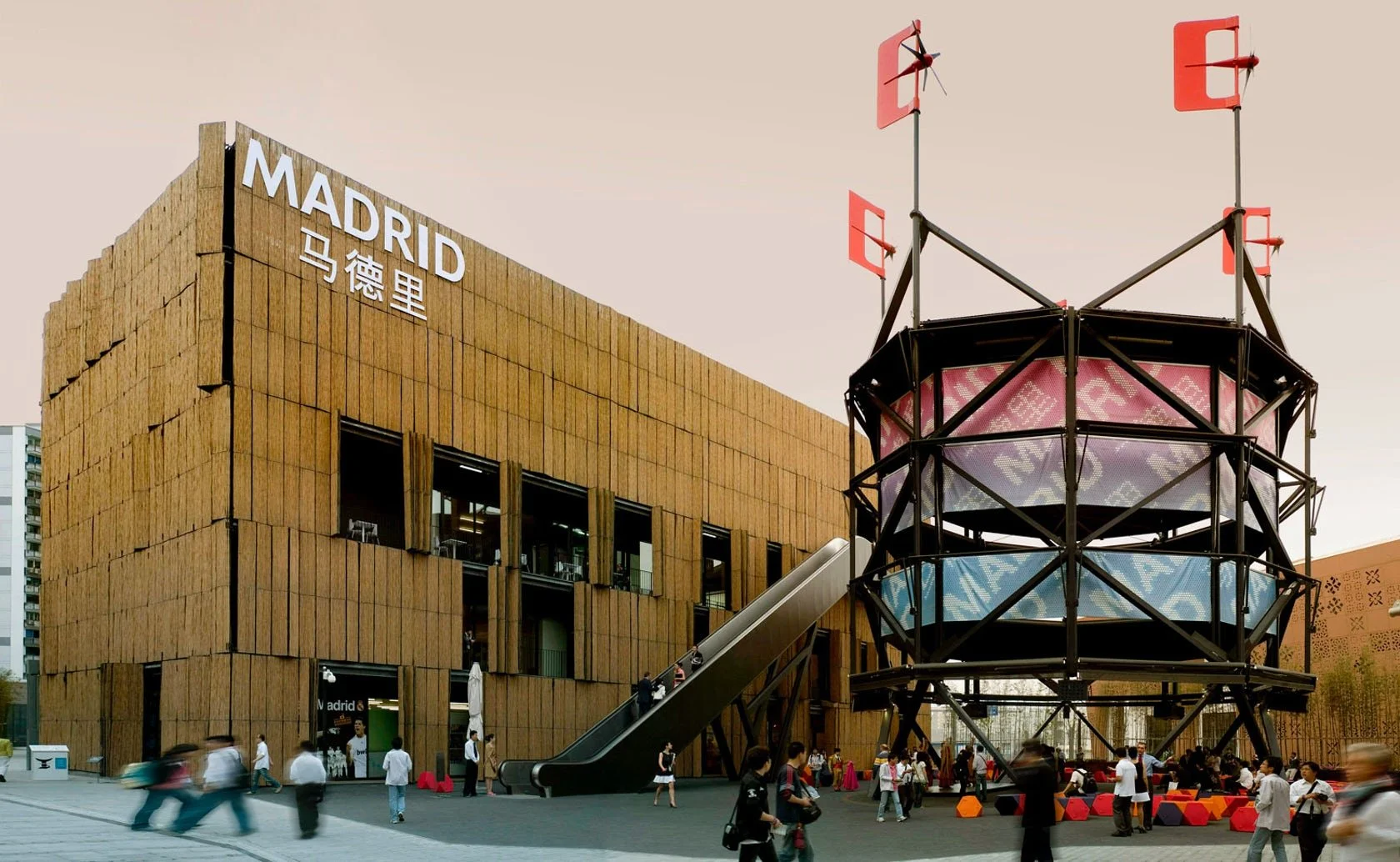My City and I, was a workshop part of the first edition of MadridDesignNet, which took place during May 17-21, 2010, where about 1,000 students from 13 different cities and more than 50 nationalities participated.
MadridDesignNet proposed a transversal tool on which creative designers, professionals, researchers, institutions, and companies worldwide worked simultaneously, forming an effective online work platform.
The background of the workshop was set in the Madrid Pavilion at the World Expo Shanghai, where we enjoyed the participation of a friendly group of Chinese students from Donghua University majoring in Environmental, Fashion, and Exhibition Design. The students were required to explore the urban problems or challenges of Shanghai under four topics of analysis:
1. Individuals and Communities
Life in the city allows the interaction between individuals and communities, creating a fabric that promotes social and economic growth. What problems do we find in the exchange and cooperation between different generations, ethnicities and cultures, occupations, and interests? What types of individuals or communities need to improve their quality of life?
2. Public Spaces
Public spaces have a fundamental role in urban structure and city life. They possess a general character of social, collective, and multi-functional use. What problems exist in its accessibility, connectivity, waste management, and security, among others? Is it necessary to design new spaces to stimulate new social settings?
3. Resources
Resources group the city's entire set of elements for its operation and development. How can we make a more responsible, sustainable, and creative use of human, natural, and technological resources?
4. Experiences
From a personal and collective view, what experiences can we improve in our daily interaction with the city? Through the design of products, processes, services, events, and environments, can we optimize the quality of its inhabitants' experiences in their everyday life?
The Workshops provided students with a methodological tool, "IED Toolkit," that facilitated the organization of processes and time management.
Our Contribution:
− Methodological approach
− Definition of themes
− Development of tools and support material
− Instruction of students
Expo 2010, officially Expo 2010 Shanghai China (Chinese: 中国2010年上海世界博览会; pinyin: Zhōngguó Èrlíngyīlíng Nián Shànghǎi Shìjìe Bólǎnhuì) was held on both banks of the Huangpu River in the city of Shanghai, China, from May 1 to October 31, 2010. It was a major World Expo in the tradition of international fairs and expositions, the first since 1992. The exhibition's theme was "Better City – Better Life" and signifies Shanghai's new status in the 21st century as the "next great world city."The Expo emblem features the Chinese character 世 ('world,' Chinese "shì") modified to represent three people together with the 2010 date. It had the most significant number of countries participating and was the most expensive Expo in the history of the world's fairs. The Shanghai World Expo was also the largest World's Fair site at 5.28 square km. By the end of the Expo, over 73 million people had visited - a record attendance - and 250 countries and international organizations had participated. On October 16, 2010, the Expo set a single-day record of having over 1.03 million visitors enter the exhibition that day. → World Expo Shanghai
The Istituto Europeo di Design is a network of educational institutes focusing on creativity and design. Its headquarters is based in Milan, and they also have branches in Rome, Turin, Venice, Florence, Cagliari, Madrid, Barcelona, and Sao Paolo. More than 8,000 new students enroll each year from up to 82 countries. → IED Madrid
Videos by: IED Media Lab. Aitor Uribarri



